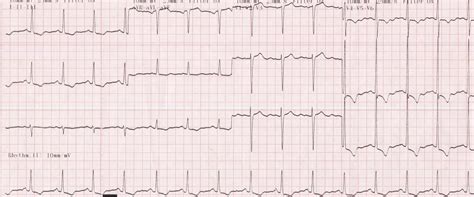lv strain pattern Right ventricular strain pattern = ST depression / T wave inversion in the . The muffler features a gorgeous matte finish and a sandblasted end cap with a stainless steel mesh outlet covering that gives the LV-10 a decidedly MotoGP look. Features: AISI 304 stainless steel; TIG welded; Sandblasted end cap; Rear stainless steel mesh; Matte finish; Black stainless steel version features a metallic, highly temperature .
0 · my lvhn sign in
1 · lvh with strain pattern meaning
2 · lvh with strain ekg
3 · lvh with repolarization abnormality
4 · lvh strain pattern vs ischemia
5 · lvh findings on ekg
6 · lv strain pattern ekg
7 · lv strain normal values
Four Seasons guests gain access to two unique pool experiences – our Resort’s seasonal private pool, complete with signature, passed amenities, and the expansive Mandalay Bay Pools complex at the adjacent Mandalay Bay Resort and Casino, which houses a Lazy River, three swimming pools and a real-sand beach, as well as Mandalay Bay Beach.
my lvhn sign in
louis vuitton türkei preise
lvh with strain pattern meaning
Left ventricular hypertrophy (LVH): Markedly increased LV voltages: huge precordial R and S waves that overlap with the adjacent leads (SV2 + RV6 >> 35 mm). R .RWPT in wide QRS complex tachycardia. R-wave peak time (RWPT) may be .Right ventricular strain pattern = ST depression / T wave inversion in the .
ECG Criteria for Left Atrial Enlargement. LAE produces a broad, bifid P wave in .In LBBB, conduction delay means that impulses travel first via the right bundle .References. Sovari AA, Farokhi F, Kocheril AG. Inverted U wave, a specific .

Left Axis Deviation = QRS axis less than -30°.. Normal Axis = QRS axis between .Learn how to identify LVH on ECG based on various indexes and secondary ST-T changes. Find out the causes, clinical characteristics and treatment of LVH and its complications.
sac louis vuitton eva
Learn how to assess LV systolic function using ejection fraction (EF) or myocardial strain, and how strain analysis can improve diagnosis and management of heart failure and . Echocardiographic global longitudinal strain (GLS) has been recommended as a means to follow patients at risk of cancer chemotherapy-related left ventricular (LV) systolic .In electrocardiography, a strain pattern is a well-recognized marker for the presence of anatomic left ventricular hypertrophy (LVH) in the form of ST depression and T wave inversion on a . Left ventricular hypertrophy itself doesn't cause symptoms. But symptoms may occur as the strain on the heart worsens. They may include: Shortness of breath, especially while lying down. Swelling of the legs. Chest .

Learn how to detect left ventricular hypertrophy (LVH) on electrocardiogram (ECG) and its causes, clinical findings, and imaging findings. The ECG is useful but imperfect .Greater LV internal dimensions and LV mass, higher end-systolic stress and lower endocardial fractional shortening were found in the group with LV strain pattern on their ECG. These .This article reviews the definition of left ventricular strain, outlines the types of strain and reviews how strain is acquired and measured. In addition, the advantages of strain analysis over LVEF as well as the incremental prognostic .
Beyond the classic measures of LVH, including QRS voltage and duration, the left ventricular (LV) strain pattern is an element whereby characteristic R-ST depression is .
Most laboratories record LV strain in the long axis and use global longitudinal strain (GLS) calculated as the average from all segments, as a measure of global LV function. . recent studies have focused on the abnormal wall motion patterns which are typical for left bundle branch block using strain imaging. This pattern which includes early .
In electrocardiography, a strain pattern is a well-recognized marker for the presence of anatomic left ventricular hypertrophy (LVH) in the form of ST depression and T wave inversion on a resting ECG. [1] It is an abnormality of repolarization and it has been associated with an adverse prognosis in a variety heart disease patients. It has been important in refining the role of ECG .
Dilated cardiomyopathy: There is marked left ventricular hypertrophy with repolarisation abnormality (LV “strain” pattern) in V5-6; LV dilatation has produced an interventricular conduction delay mimicking LBBB .
STI-based automated function imaging (AFI) is a user friendly advancement to evaluate left ventricular (LV) systolic function and regional patterns based on regional LV longitudinal strain values . The result of AFI is usually presented as a bull’s eye plot showing color-coded and numerical values for peak systolic longitudinal strain of all . The most common ECG dilemmas one encounters is to differentiate between the ST segment depression and T wave inversion due to LVH from that of primary ischemia. Very often , the entity is misdiagnosed . The implication can be serious , and adding further complexity is exercise stress testing is alos prone for errors in. The ECG strain pattern of lateral ST depression and T-wave inversion is a marker for left ventricular hypertrophy (LVH) and adverse prognosis in population studies. However, whether ECG strain is an independent predictor of cardiovascular (CV) morbidity and mortality in the setting of aggressive antihypertensive therapy is unclear. ECGs were examined at study .Regional strain pattern analysis can be useful to identify various specific nonischemic cardiomyopathies. Regional strain analysis is valuable for differentiating between the various pathologic conditions that can cause increased ventricular wall thickness. . Onset of LV dysfunction should prompt immediate alteration of the chemotherapeutic .
Left ventricular (LV) global longitudinal strain (GLS) has established as a robust measure of LV systolic function. Various studies have shown that the reproducibility of LV GLS measurement is superior to that of 2-dimensional LV ejection fraction measurement. 1,2 In addition, LV GLS is an important prognostic marker in various cardiac diseases and has .
Purpose of review: The assessment of left ventricular function by two-dimensional (2D) transthoracic echocardiography (TTE) is conventionally performed by measuring the ejection fraction, which has been shown to have important prognostic implications. However, left ventricular ejection fraction (LVEF) has notable shortcomings, including limited reproducibility, .Speckle tracking echocardiography permits assessment of myocardial strain in three spatial directions (longitudinal, radial and circumferential) independent of the angle of insonation of the ultrasound beam. Longitudinal strain is probably the most frequent type of strain used to characterise LV systolic function in clinical practice. LV strain pattern is one potential key variable as part of the ongoing solution to the management problem of aortic stenosis in the frail elderly patient. Section snippets Background and pathophysiology. As the work initially by Wilson [2] led to a greater understanding of the electrocardiographic waves and segments, so was born the concept of .
This is more than what is usually seen with pure LV "strain". Note how the inverted T waves look symmetric in V4-thru-V6 - with much sharper descent than the usuallly more gradual ST decline (seen in Figure 3 in the above LVH link). In addition - the upright T wave in lead V3 is quite peaked. This is not the reciprocal of pure "strain". Anything that puts stress on the heart's lower left chamber can cause left ventricular hypertrophy. The lower left chamber is called the left ventricle. As the strain on the lower left chamber increases, the muscle tissue in the chamber wall thickens. Sometimes, the size of the heart chamber itself also increases.
Three-dimensional (3D) left ventricular (LV) myocardial strain measurements using transthoracic 3D echocardiography speckle tracking analysis have several advantages over two-dimensional (2D) LV strain measurements, because 3D strain values are derived from the entire LV myocardium, yielding more accurate estimates of global and regional LV function. In .
LVH with strain pattern can sometimes be seen in long standing severe aortic regurgitation, usually with associated left ventricular hypertrophy and systolic dysfunction. The sensitivity of LVH strain pattern on ECG as a .
2017, using the search terms strain echocar-diography, tissue Doppler strain, and speckle-tracking echocardiography. LV SYSTOLIC FUNCTION AND PROGNOSIS Assessment of LV systolic function is a cen-tral part of the evaluation of cardiac disease. Numerous methods can be used in this assessment (Table).6 Accurate assessment
Left ventricular global longitudinal strain (LVGLS), left ventricular global circumferential strain (LVGCS), and left ventricular global radial strain (LVGRS) measurements are established parameters for assessing left . Echocardiography is, therefore, an excellent screening tool for CA. Suggested echo indices to discriminate CA from other causes of LV hypertrophy comprise conventional LV remodeling and diastolic function assessment 6,7 and different deformation-based parameters (), such as the ratio of regional longitudinal strain values (relative apical sparing or septal apical . Top left: LV longitudinal strain map in a patient who presented with heart failure with preserved ejection fraction secondary to cardiac amyloidosis. There is marked impairment of global longitudinal strain with an ‘apical sparing’ pattern that is typical but not specific for cardiac amyloidosis. Top right: LV longitudinal strain map in a .
A shortened early deceleration time indicates an increased LV operating stiffness. It is a hallmark of restrictive filling pattern and denotes poor prognosis in patients with myocardial infarction, dilated cardiomyopathy, heart transplantation, hypertrophic cardiomyopathy, and restrictive cardiomyopathy. 4 Both pseudonormalized and restricted filling patterns indicate a . LV strain patterns can be used to assess the subclinical cardiac function of HCM patients on the merit of being more sensitive than LVEF. In addition, LV strain patterns can detect serious HCM patients and may be helpful to non .8. Ventricular Hypertrophy. Topics for study: Introduction; Left Ventricular Hypertrophy (LVH) Right Ventricular Hypertrophy (RVH) Biventricular Hypertrophy Speckle-tracking analysis is angle-independent and allows accurate evaluation of myocardial deformation in all the LV segments. 8,10 The change in length/initial length of the speckle pattern over the cardiac cycle is used to calculate longitudinal strain, with myocardial lengthening or stretching represented as positive strain, and myocardial .
Associated features often include those seen in RVH:. Right axis deviation; Dominant R wave in V1; Dominant S wave in V5 or V6; Compare this to the left ventricular strain pattern, where ST/T-wave changes are present in the left ventricular leads (I, aVL, V5-6).. Causes. Associated with increased pulmonary artery pressures in the setting of acute or .V4-V6 precordial leads may show ST depression & T wave inversions known as the LV Strain pattern; Romhilt-Estes Criteria. Diagnostic ≥ 5 points and probable ≥ 4 points) ECG Criteria: Points: Voltage Criteria (any of): R or S in limb leads ≥20 mm; S in V 1 or V 2 ≥30 mm;(LVEF) has notable shortcomings, including limited reproducibility, suboptimal inter/intraobserver variability and dependence on load/volume. Furthermore, subclinical left ventricular dysfunction cannot be measured with LVEF. With the advent of left ventricular deformation (strain) analysis, a new and robust means for assessing left ventricular function has emerged. Recent findings .
Global longitudinal strain (GLS) <16 percent likely indicates significant myocardial dysfunction, according to results of a meta-analysis presented Aug. 31 at ESC Congress 2019 and simultaneously published in JACC: Cardiovascular Imaging.. While the prognostic and diagnostic value of GLS has been recognized, its inclusion in clinical guidelines has been slowed .

Although all these power levels are true they don't always make sense due to plot holes. *Note the power levels are in chronological order so Dragon Ball Z will come after Dragon Ball. Dragon Ball. The quest for the Dragon Balls. Gokou: 10 Gokou Ozouru: 100
lv strain pattern|my lvhn sign in



























